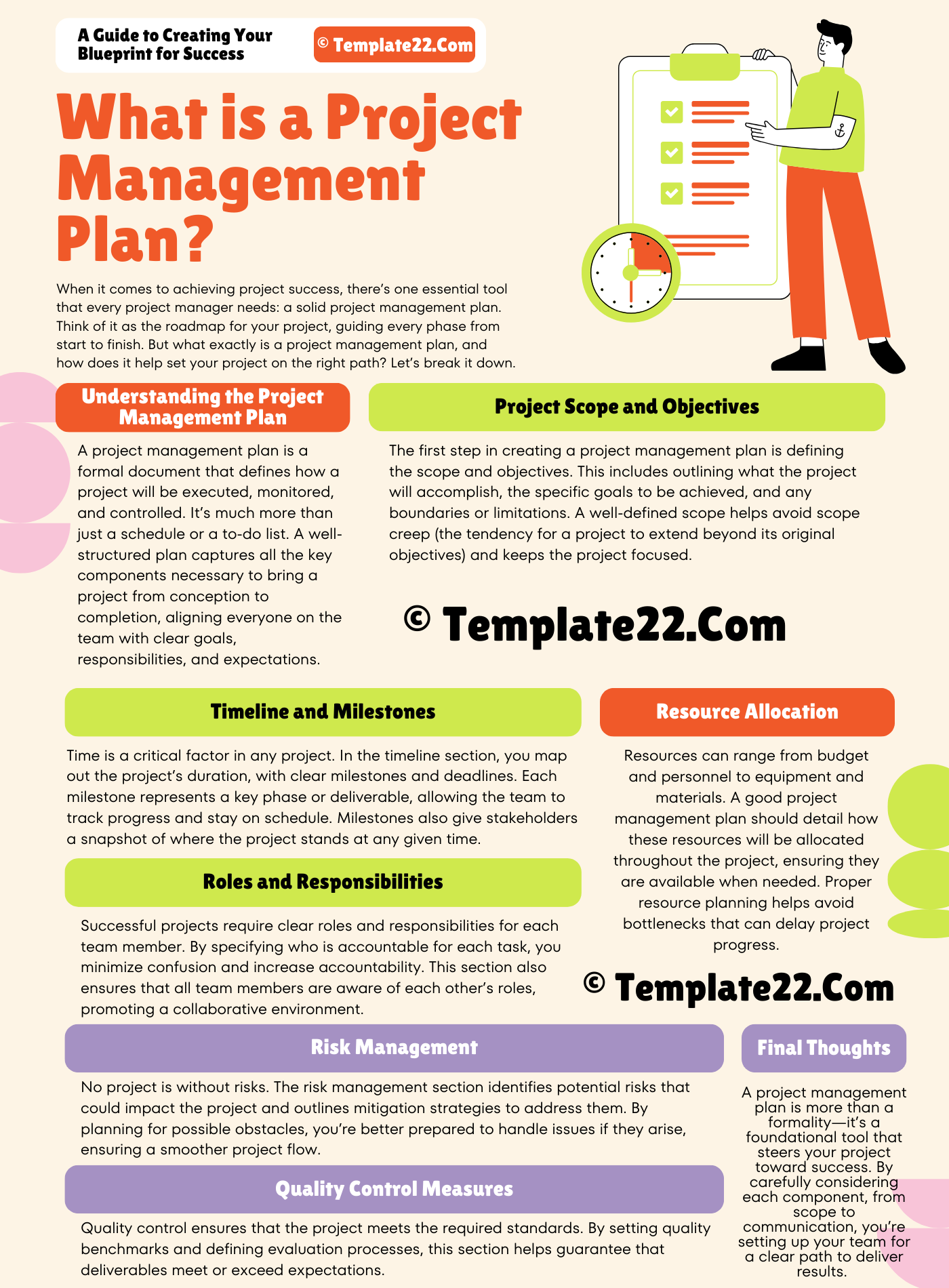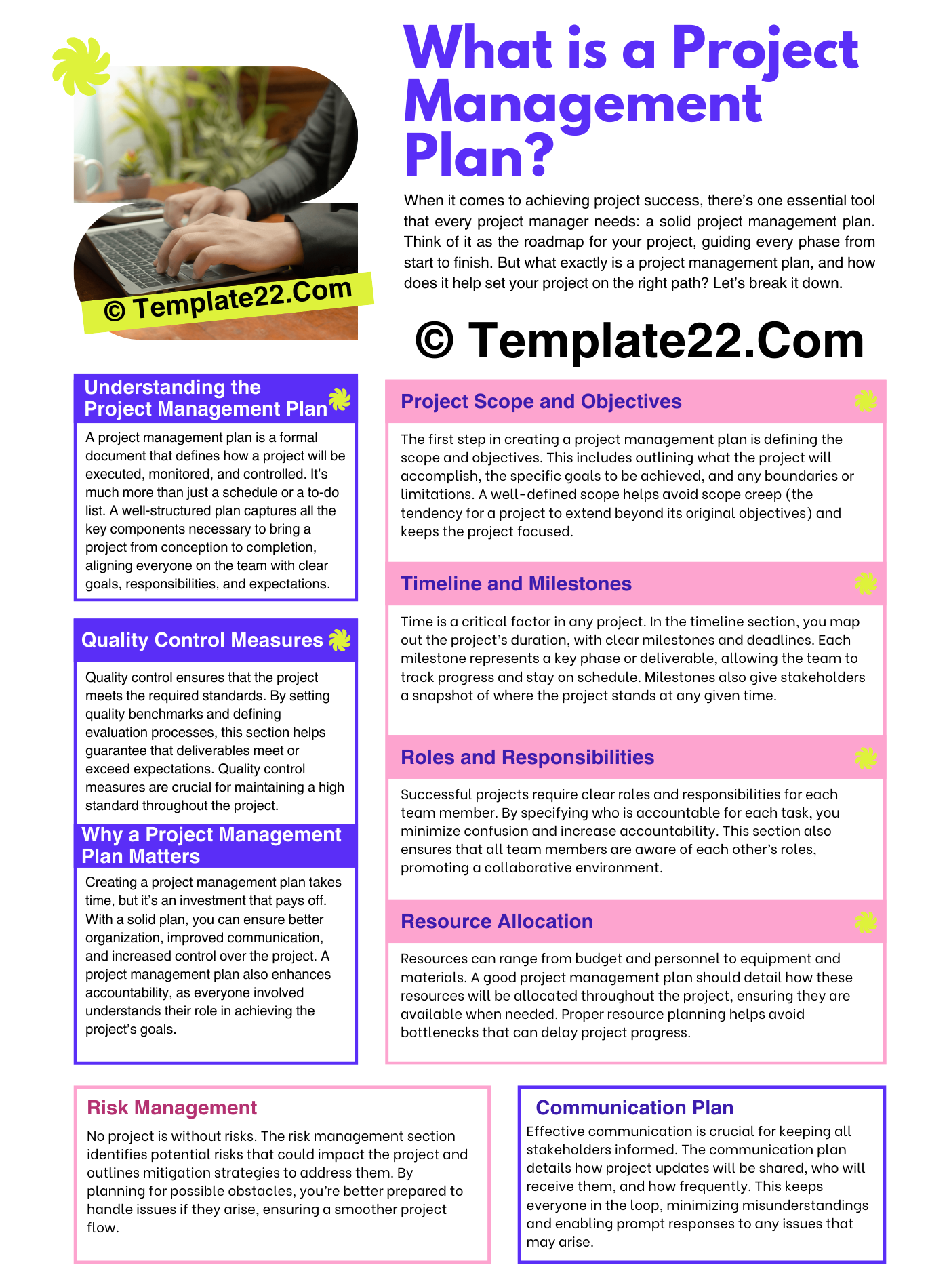 When it comes to achieving project success, there’s one essential tool that every project manager needs: a solid project management plan. Think of it as the roadmap for your project, guiding every phase from start to finish. But what exactly is a project management plan, and how does it help set your project on the right path? Let’s break it down.
When it comes to achieving project success, there’s one essential tool that every project manager needs: a solid project management plan. Think of it as the roadmap for your project, guiding every phase from start to finish. But what exactly is a project management plan, and how does it help set your project on the right path? Let’s break it down.
Understanding the Project Management Plan
A project management plan is a formal document that defines how a project will be executed, monitored, and controlled. It’s much more than just a schedule or a to-do list. A well-structured plan captures all the key components necessary to bring a project from conception to completion, aligning everyone on the team with clear goals, responsibilities, and expectations.
A good project management plan answers critical questions, such as:
- What is the project’s objective?
- Who will be involved?
- How will the project be carried out?
- What resources are required?
- How will success be measured?
Answering these questions makes a project management plan the backbone of your project, ensuring that everyone knows what to do and when to do it.
Key Components of a Project Management Plan
1. Project Scope and Objectives
The first step in creating a project management plan is defining the scope and objectives. This includes outlining what the project will accomplish, the specific goals to be achieved, and any boundaries or limitations. A well-defined scope helps avoid scope creep (the tendency for a project to extend beyond its original objectives) and keeps the project focused.
2. Timeline and Milestones
Time is a critical factor in any project. In the timeline section, you map out the project’s duration, with clear milestones and deadlines. Each milestone represents a key phase or deliverable, allowing the team to track progress and stay on schedule. Milestones also give stakeholders a snapshot of where the project stands at any given time.
CLICK HERE TO DOWNLOAD 300+ PROJECT MANAGEMENT TEMPLATES & DOCUMENTS IN EXCEL
3. Roles and Responsibilities
Successful projects require clear roles and responsibilities for each team member. By specifying who is accountable for each task, you minimize confusion and increase accountability. This section also ensures that all team members are aware of each other’s roles, promoting a collaborative environment.
4. Resource Allocation
Resources can range from budget and personnel to equipment and materials. A good project management plan should detail how these resources will be allocated throughout the project, ensuring they are available when needed. Proper resource planning helps avoid bottlenecks that can delay project progress.
5. Risk Management
No project is without risks. The risk management section identifies potential risks that could impact the project and outlines mitigation strategies to address them. By planning for possible obstacles, you’re better prepared to handle issues if they arise, ensuring a smoother project flow.
6. Communication Plan
Effective communication is crucial for keeping all stakeholders informed. The communication plan details how project updates will be shared, who will receive them, and how frequently. This keeps everyone in the loop, minimizing misunderstandings and enabling prompt responses to any issues that may arise.
7. Quality Control Measures
Quality control ensures that the project meets the required standards. By setting quality benchmarks and defining evaluation processes, this section helps guarantee that deliverables meet or exceed expectations. Quality control measures are crucial for maintaining a high standard throughout the project.
Why a Project Management Plan Matters
Creating a project management plan takes time, but it’s an investment that pays off. With a solid plan, you can ensure better organization, improved communication, and increased control over the project. A project management plan also enhances accountability, as everyone involved understands their role in achieving the project’s goals.
CLICK HERE TO DOWNLOAD 300+ PROJECT MANAGEMENT TEMPLATES & DOCUMENTS IN EXCEL
Moreover, having a comprehensive plan allows for flexibility. While the plan serves as a guide, it’s also a living document that can adapt to changes, keeping the project on track even when challenges arise.
Final Thoughts
A project management plan is more than a formality—it’s a foundational tool that steers your project toward success. By carefully considering each component, from scope to communication, you’re setting up your team for a clear path to deliver results. Whether you’re a seasoned project manager or just starting, investing time in creating a robust project management plan is one of the smartest moves you can make.
So, next time you start a project, remember: to plan well, execute confidently, and watch your vision come to life.
